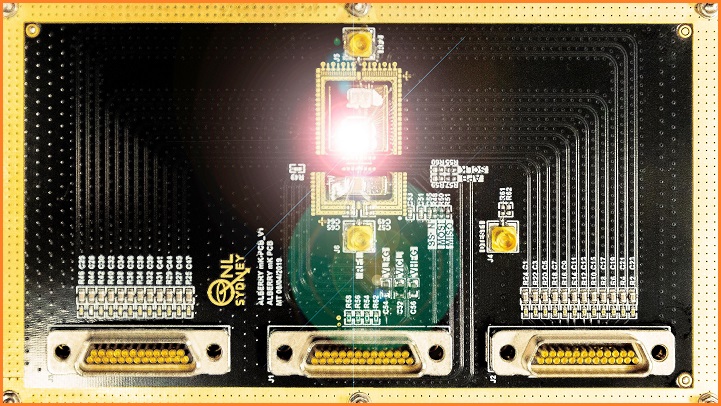A team of scientists have invented a chip to control large numbers of qubits – the building blocks of quantum computers.
The breakthrough technology, engineered at the University of Sydney’s Microsoft Quantum Laboratories, looks to solve the scalability problem currently facing quantum computer development.
Professor David Reilly, one of the chip’s engineers who holds a joint position with the University of Sydney and Microsoft, told Information Age the problem of scale starts with an information bottleneck.
“To build quantum computers that actually do useful things you need thousands or millions of qubits,” he said.
“But there is an input/output (I/O) bottleneck when you try to control large numbers of individual qubits.
“A conventional processor like the one in your laptop or phone has a relatively small number of I/O pins connecting it to the outside world, compared to the massive number of transistors inside.
“This is because the transistors can interact with each other, fanning in and out as the information flows along.
“But quantum computers are totally different beasts. You can’t copy a qubit without disturbing it because copying requires measurement, and in quantum mechanics, measurement or observation affects its state.”
Since qubits can’t interact with each other without affecting their information, each one needs to be precisely controlled from a conventional computer.
Currently this involves a lot of bulky wires leading out of the near-absolute zero temperature region where the qubits operate.
These big cables bring noise and heat that can interfere with delicate quantum states.
“Quantum computers at the moment are in a similar stage to the days of ENIAC or Harvard Mark I – back when they took up rooms filled with big racks, vacuum tubes and cables everywhere,” Professor Reilly said.
The solution offered by Professor Reilly’s team and published in Nature Electronics this week is a complementary metal-oxide-semiconductor (CMOS) chip that modulates the dynamic and static electric signals used to control qubits in cryogenic temperatures.
The CMOS chip can itself operate in cryogenic temperatures right next to the qubits, leaking the bare minimum amount of heat in order to not disturb the delicate information in a quantum computer.
Professor Reilly said it has taken about four to five years to get to the point of publishing their findings and that his team is already taking data on the next generation of cryogenic CMOS chip.
At 2.5mm by 2.5mm, the CMOS chip circuit is super tiny and has 100,000 transistors and a finite-state machine used to manage the logic of controlling precise electrical charge needed for quantum computing.
“It’s not so much about the publication, even though it’s good to get this peer-reviewed and published. The goal is to build the technology,” he said.
“If we want to build a machine that does something interesting, something useful for everyday people – like discovering new pharmaceuticals – then we need to build a machine at sufficient scale, with those thousand or more qubits.”
The tech giants are in a struggle to build quantum computers that function beyond a laboratory setting.
Google has previously claimed ‘quantum supremacy’ after using its 53-qubit Sycamore processor to complete a very specific task.
And IBM has a roadmap toward its 1,121 qubit quantum computer which it expects will be complete by 2023.
Professor Reilly has found the relationship between University of Sydney and Microsoft valuable for his work and the development of quantum computing.
“I don’t think you could do this without both worlds,” he said.
“You really do need the muscle of industry, of its engineering capabilities and broader ecosystem.
“But you also need the students and young people making breakthroughs and accidents in an academic setting.”









